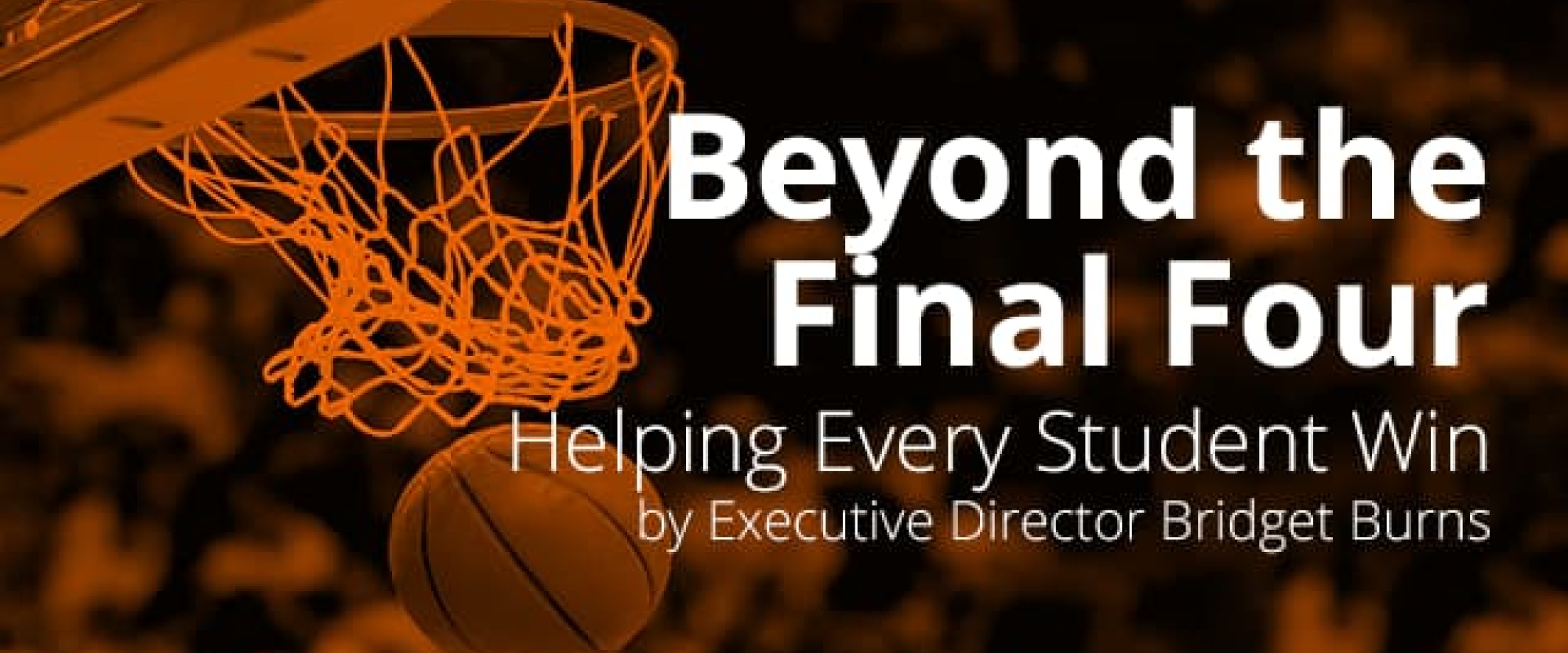When Villanova’s Kris Jenkins hit a three-pointer at the buzzer to win the men’s NCAA basketball championship last month, the nation erupted in cheers. America loves an underdog, and Villanova — a small private school competing against perennial powerhouse North Carolina — wasn’t expected to win. The championship was their first in 31 years and just their second in history.
Underdog stories are inspiring in college athletics because we love to see ordinary people achieve extraordinary success through hard work and determination. And in sports, there can only be one champion.
But when it comes to the classroom, we don’t want just one winner. Graduation should be commonplace for students from all walks of life. Whether you start with every advantage or none, we want you to succeed. Unfortunately, too many students who beat the odds to get to college never make it all the way through.
Today, 77 percent of children from wealthy families earn a bachelors degree by age 24. Only 9 percent of children born into low-income households achieve the same.
These low-income students — many the first in their families to go to college — work just as hard, if not harder, than their better-off peers. But unlike students with parents and siblings who went to college, first-generation and low-income students may not know where to turn when problems arise.
To improve outcomes for these students, colleges and universities have to think differently about their role in supporting students by providing resources like coaching or inspirational nudges to help them overcome major obstacles as well as daily hurdles like rescheduling an exam.
A number of universities are leading the way. One program at University of Texas at Austin, for instance, identifies first-year students who are at risk of having a tough transition between high school and college. These students are brought to campus during the summer before freshman year for intensive academic boot camps. They also get coaching to ensure that they are familiar with the university’s systems and processes. New students address challenges early, cultivate shared resilience, and learn where to turn when they need help during their first semester.
Better communication can help too. At Michigan State, a group of administrators set out to understand how the university was communicating with first year students, and whether they could improve. They found new students were getting upwards of 400 messages from MSU email addresses, many of which were going unread.
The school is now beginning to streamline communications, prioritize the most important messages, and exploring text messaging and other student-friendly forms of communication to help students stay on track.
Academic advising is another potential lifeline for students, but too often it turns into a minefield. Advisers can be overloaded with students or lack the data they need to find the students who need help. Often, the students themselves may not realize they’re in academic or financial danger.
A handful of universities are pioneering the use of data science to predict which students are likely to face challenges, and proactively reach out with support. Decades’ worth of anonymous student records are collected and real-time data from disparate campus systems are analyzed.
Could a bad grade today lead to a student failing in more advanced work next semester? Are students choosing high risk classes that may require extra support? Do attendance patterns indicate a student may be falling behind?
Tech savvy universities are using big data to create highly accurate, real-time alerts for their advising team. If they see a red flag, the technology alerts both adviser and student that they need to meet right away. Problems can be identified, discussed, and solved before they become major issues.
Early results have been impressive. Georgia State University has now eliminated the gap in graduation rates between students of different income and racial backgrounds. The university was recently recognized by the U.S. Department of Education for their data-driven transformation, and now they’re beginning to share what they’ve learned with their peers.
Already, GSU's partners have seen rapid progress accelerated by this network approach. These institutions include Oregon State University, University of Central Florida, Michigan State University, Iowa State University, University of Kansas, and Ohio State University.
Of course, there are no silver bullets. Improving college graduation rates for low-income and first-generation students requires a deep commitment to student success from the highest levels of university leadership and a clear, strategic vision of why the commitment is being made. It takes a willingness to invest in both the technology and the human capital necessary to support smart, consistent implementation.
It also requires a shift in how we think about higher education’s underdogs. For them, we can no longer allow success to be the exception. We need every student to have the same opportunity to emerge a winner.
Bridget Burns is Executive Director of the University Innovation Alliance — a national consortium of large public research universities collaborating to improve outcomes for all students. She has spent the past decade, advising university presidents, chancellors, and policymakers on higher education policy, strategy, and innovation.

